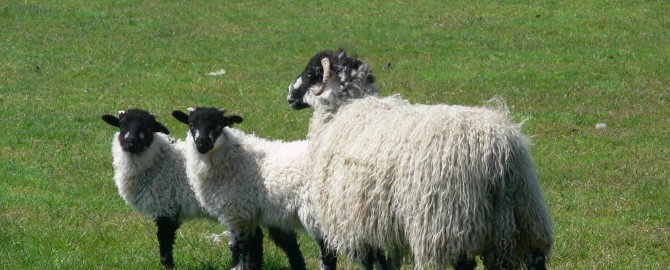Relevant Products
- Ewedale gold rolls & pencils (PDF)
- Ewedale green rolls & pencils (PDF)
- Ewedale ease rolls & pencils
- Intensive Lamb creep (PDF)
Lactation places the highest nutrient demands on the ewe. A ewe requires three times as much energy per day in early lactation compared with maintenance. Lactating ewes normally reach their peak in milk production around 3 to 4 weeks after lambing. A loss of body condition can be expected, but this should not be >0.5 units from lambing to weaning. However, if the supply of energy and protein is deficient, milk yield and lamb growth rates will be affected. Furthermore, a ewe nursing twin lambs produces 20 to 40 percent more milk than a ewe nursing one lamb.
Also ewes need to be provided with sufficient water, a ewe can drink up to 9 litres of water per day.
At grass
For grazing ewes and lambs, until grass sward heights reach 4cm, much of the nutrients in the diet must come from supplementary concentrates. By the time lambs reach eight weeks, fast lamb growth rates will only be maintained if a high quality creep feed is made available.
When grass cover is above 5cm, concentrates are not required for singles/twins. If grass supply is insufficient, continue to feed concentrates after lambing (up to a maximum of 1 kg/day of high energy and protein). Weather conditions will need to be monitored as ewes and lambs will not graze when weather conditions are poor.
Nutrients
The level of supplementary feed needed will depend on grass availability, as well as the breed of the ewe, and number of lambs per ewe.
Continuing to feed the same supplement as was fed in late pregnancy will mean the ewe’s rumen is already used to that feed and so there won’t be any problems feeding it.
The lamb is entirely dependent on milk for all its nutrients during this time. A ewe weighing 75kg with twins will have an energy requirement of around 34MJ ME/day at peak lactation. Aim for a concentrate containing 12.5MJ ME/kg DM, with at least 16-18 per cent crude protein. A large lowland ewe (75kg) will need around 1.1-1.6kg/head/day of concentrate.
Feeds
Feed choice should also be considered carefully, compounds are convenient, however, blends may be preferred but it is important to ensure the nutrients are correct, including minerals and vitamins.
Higher producing ewes rearing more than one lamb will need a source of digestible undegraded protein (DUP), to support good milk yields. Soya bean meal or protected soya can be included in the ration for this purpose. Good quality ingredients are needed at this stage as there is no room for filler ingredients as these would limit dry matter intake.
Acidosis
This should be split into meals of no more than 0.5kg/head at any one time to avoid overloading the rumen, and adjust the level fed to match grazing availability, or if having to rely on hay, silage or straw, until grass growth takes off.
It is important not to rely too heavily on cereals, which can overload the rumen with starch and cause acidosis. This can lead to a drop in both milk yield and milk quality, if some fibre is not included in the diet. The result would be reduced growth rates in lambs.
Triplets plus
Even if the ewe has been fed correctly in late pregnancy leaving the triplets for her to rear is not a viable option. She will not have enough milk to rear three lambs effectively. The lambs will need to be fostered or artificially reared.



